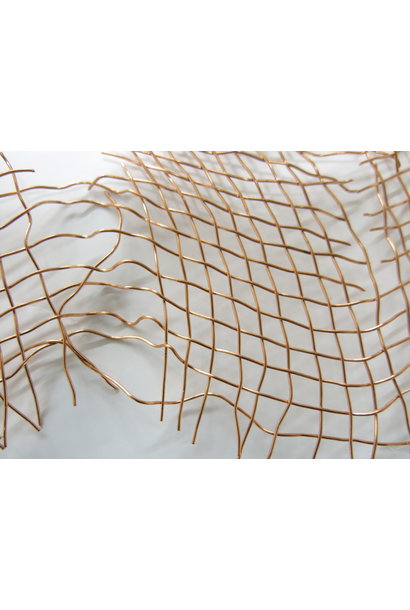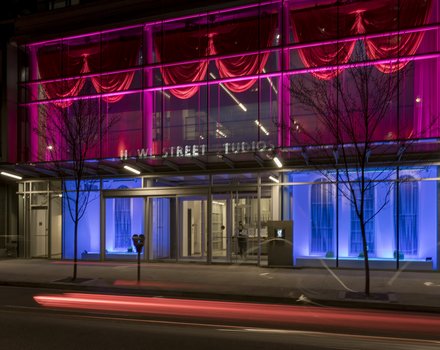

Ruth Beer “Extract, Form, and Print”, Ruth Beer
C$ 0.00 Excl. tax
- File number: EXHI1048
...
Extract, Form, and Print presents a new series of monotypes by Ruth Beer, alongside a selection of sculptural works. The exhibition explores the physical processes of printmaking as they relate to the materiality of sculpture, meanwhile continuing Beer’s artistic research around the socioeconomic significance of resource extraction industries in the shaping of Western Canadian politics and culture.
Upon entering the gallery, an artwork consisting of three weaving panels, made from electromagnetic copper wire, are hung from the wall in the gallery window. As the weave is loose and the material is quite rigid, the weavings somewhat resemble the structure of a rug or blanket but obviously wouldn’t function in a comforting way. The shine of the copper is illuminating and invites you in like a lure, but the weavings are actually more hostile than hospitable; they seem like nets used to catch or contain something.
Throughout the gallery, there are three clusters in various formations of black and white prints that are loosely hung between magnets and screws in the wall. The largest cluster is a grid that contains ten prints, and the other clusters contain four prints each. From a distance, what seem to be patterns of various shades of grey, are actually impressions made on paper with the use of different fabrics. Various woven, netted, meshed, or knotted materials were employed to create embossments and printed surfaces. The open weave materials essentially acted as nets or blockages to resist the transfer of ink onto the paper.
At the far end of the gallery, a black polyurethane formation sits across from a Jacquard woven tapestry made from electromagnetic copper wire and magnetic audio cassette tape. The black formation looks like a large chunk of oily bitumen—it is shiny, smooth, bulbous, and weighty, despite being made from a very lightweight polyurethane. The tapestry looks like a watery surface with an oil-slick on top of it. The cassette tape woven into the copper wire makes you wonder what sounds were recorded on that tape. Made from a mix of electromagnetic materials, the tapestry operates to suggest transmission of information (songs, stories, etc) that is embedded, yet not accessible.
Together the works use oil, copper, and netting as materials or forms that reference the resource extraction industries of petroleum, mining, and fishing. Each of the works are seductive as they create a shimmer, shine, or pattern that plays with the eye, calling you into the work and asking for your attention. The visible embossments on the paper, the delicate weavings of the copper, and the curious smooth surfaces of the polyurethane illicit not only a desire to be seen, but also to be touched.
By creating seductive forms that simultaneously invite us in and repel us, through their toxic associations to materials that reference our natural resource economy, Beer reveals the potential for art to bring attention to political issues, not in an overt way, but in a way that encourages more investigation and questions from the viewer. The subtlety of the work reinforces the notion that we are implicated in petroleum culture even if some of us are unaware.
Curated by Justin Muir
Ruth Beer’s latest research and creation project, “Trading Routes: Grease Trails, Oil Pipelines” is supported by the Social Sciences and Humanities Research Council of Canada (SSHRC). She is interested in the use of expressive materials and processes in the production of objects, video/sound and installations. Among the diverse subjects that are referenced are expanded notions of landscape, geo-marine conditions, natural resource extraction, and energy. Her work is multidisciplinary, including sculpture, video, woven structures and interactive projections combining minimalism, craft, and 20th century avant-garde aesthetics. Exhibitions include the Vancouver Art Gallery, Contemporary Art Gallery, Western Front, and other local, national and international exhibitions. Beer is the recipient of several public art commissions, Canada Council grants, and is a member of the RCA. She is a Professor in the Faculty of Visual Art and Material Practice at Emily Carr University of Art and Design.
Recently viewed
-
 Favoriten
Add to cart
Favoriten
Add to cart
Ruth Beer “Extract, Form, and Print”, Ruth Beer
C$ 0.00 Excl. tax


